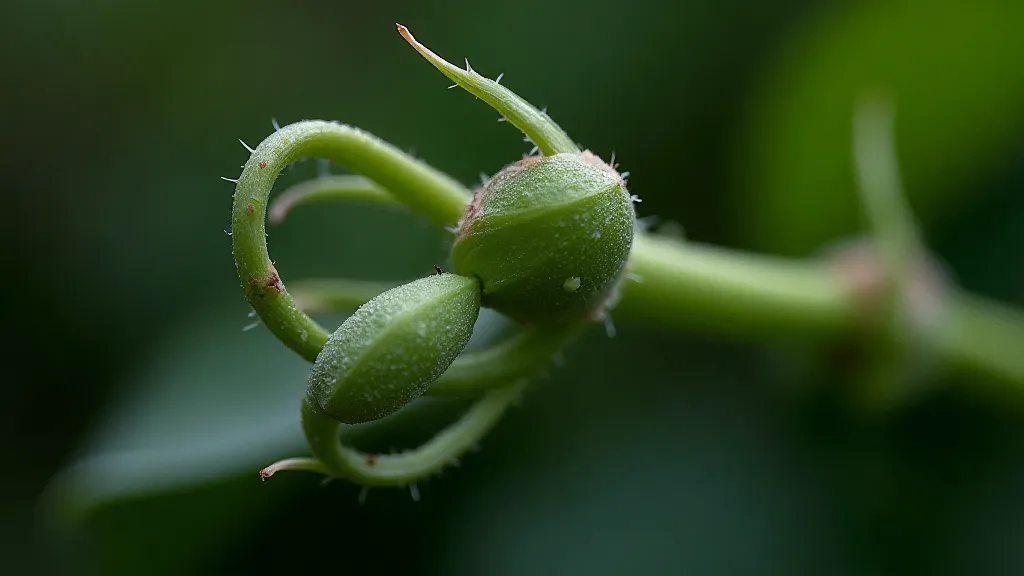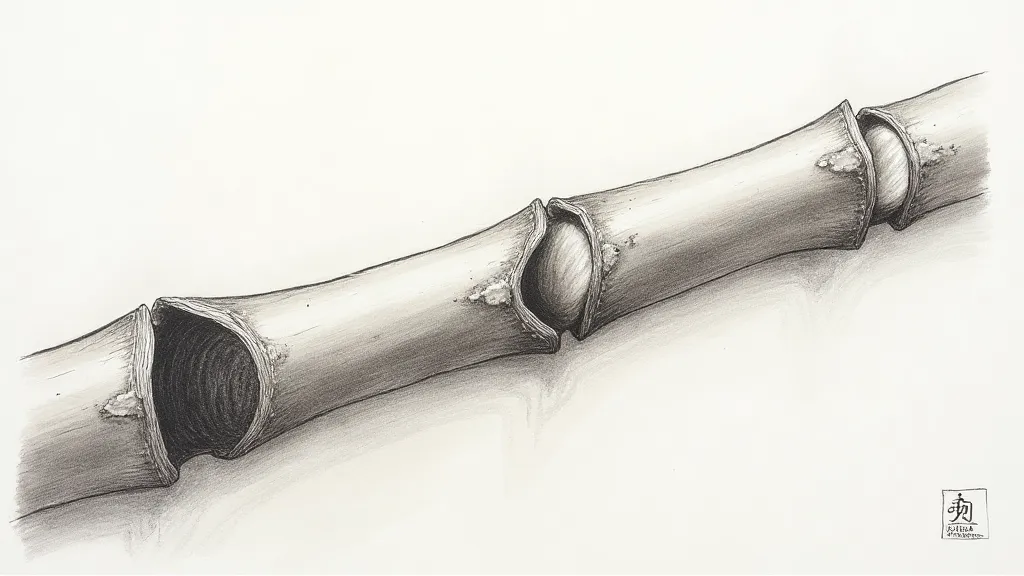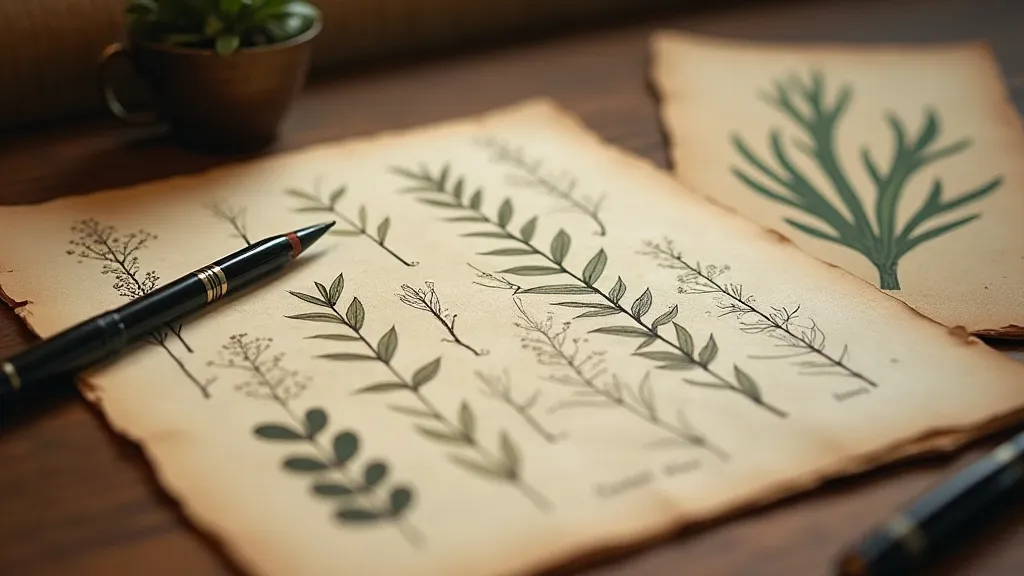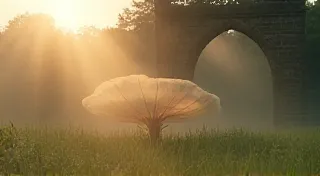The Labyrinth of Stems: A Study in Line and Form
There's a profound elegance in the overlooked. We rush through gardens, admiring the vibrant blooms, the bold architecture of trees, but often bypass the quiet dignity of the stem. It’s the scaffolding, the unsung hero, the silent witness to a plant’s journey from seed to sky. My fascination with botanical illustration began, unexpectedly, with a vintage accordion. Not a plant at all, you see, but a revelation of intricate, precisely-engineered parts working in concert. Each bellows was meticulously folded, each reed vibrated with a carefully tuned precision. It sparked in me a respect for the artistry of repetition, of tiny details contributing to a larger, beautiful whole – a concept perfectly mirrored in the structure of a plant stem.
Consider the stem of a climbing rose. It isn’t a simple, straight line. It spirals, it curves, it twists, often with an almost theatrical flair as it reaches for the sunlight. Capturing that dynamism in pen and ink isn't merely about drawing; it's about understanding the inherent logic of its growth, the tension between verticality and the pull of gravity. It’s a lesson in embracing imperfection, because truly, no two stems are ever the same.

The Foundation: Observation and Confidence
The most crucial element in accurately depicting a plant stem, or any botanical subject, is careful observation. Forget what you *think* a stem looks like. Look at the actual stem in front of you. Note the direction of the spirals. Are they tight and compact, or loose and languid? How does the stem thicken as it matures? Where are the nodes – the points where leaves and branches emerge – and how do these affect the stem’s overall form?
Confidence in your linework is equally important. A hesitant line will betray a lack of understanding and ultimately diminish the final result. There's a beautiful directness to pen and ink – a feeling of commitment. A bold line declares its presence; a weak one fades into nothingness. Practice hatching and cross-hatching to build tonal values, but don’t be afraid to use a single, unwavering line to define the essential form of the stem. Think of the lines in an old blueprint - precise, deliberate, conveying essential information. That's the kind of clarity we strive for.
Rendering Texture: The Language of Marks
The surface of a stem isn't smooth. It’s a landscape of ridges, grooves, tiny hairs, and often, the scars of past growth. These textures add depth and realism to your illustration. Experiment with different pen strokes to simulate these variations. A stippled effect can suggest the downy fuzz of a young stem. Short, broken lines can mimic the rough bark of a mature woody stem. Parallel lines, varying in thickness and spacing, can capture the subtle ridges and grooves of a peeling stem.
Don’t feel obligated to render every single detail. Selective rendering is key. Focus on the areas that contribute most to the stem’s overall form and character. Consider the play of light and shadow; the darkest areas will naturally draw the viewer's eye, while lighter areas can be suggested with minimal marks or left almost entirely blank. Think of the masters of scientific illustration – their marks weren't just about documenting; they were about communicating a sense of volume and three-dimensionality.
The Delicate Dance of Light and Shadow
Light and shadow are the bedrock of visual form. To portray a stem’s three-dimensionality, analyze how light falls upon its surface. Where are the highlights, indicating the points where light is directly reflected? Where are the shadows, revealing the recessed areas and creating a sense of depth?
Hatching and cross-hatching are invaluable tools for creating tonal values. Varying the density and direction of your lines can dramatically alter the perceived darkness. Experiment with different pen angles and line weights to achieve the desired effect. Remember, the contrast between light and shadow is what defines form. A flat, evenly-toned stem will appear lifeless and unconvincing.

Beyond the Lines: Scientific Illustration and Artistic Expression
Botanical illustration encompasses a spectrum of approaches, from the meticulous accuracy required for scientific documentation to the more expressive freedom of artistic interpretation. Scientific illustrators prioritize fidelity to the subject, striving to depict every detail with unwavering precision. Artistic illustrators, on the other hand, may prioritize capturing the essence of the plant, using stylistic choices to convey a particular mood or aesthetic.
Understanding the principles of plant anatomy can significantly enhance your botanical illustrations, regardless of your chosen approach. Knowing how the stem connects to the roots and branches, how the vascular tissues are arranged, and how the leaves are positioned can provide a deeper understanding of the plant’s overall structure and inform your artistic choices. This knowledge is akin to understanding the mechanics of an antique accordion – knowing how each reed vibrates contributes to the overall music.
Collecting and Preservation: Echoes of the Past
There’s a connection between studying antique instruments and appreciating antique botanical illustrations. Both offer glimpses into past craftsmanship and a unique sensibility. Many early botanical illustrations were produced with painstaking care, often using traditional pen and ink techniques. They represent not only a record of plant life but also a reflection of the artistic and scientific values of their time.
If you’re drawn to the history of botanical illustration, consider exploring antique prints and drawings. Many original works are available for purchase, and even reproductions can offer a valuable insight into the techniques and styles of earlier artists. Just as restoring an antique accordion can reveal its hidden beauty and functionality, studying these historical illustrations can illuminate the enduring power of botanical art. The care and dedication infused into these works speaks to a respect for nature and a deep appreciation for the artistry of observation.






